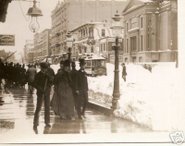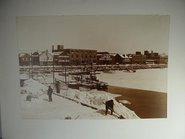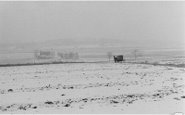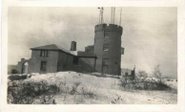Winter '09 / '10 - Winter Temperatures and the Arctic Oscillation
From NASA/s Earth Observatory...
"This image illustrates how cold December was compared to the average of temperatures recorded in December between 2000 and 2008. Blue points to colder than average land surface temperatures, while red indicates warmer temperatures. Much of the Northern Hemisphere experienced cold land surface temperatures, but the Arctic was exceptionally warm. This weather pattern is a tale-tell sign of the Arctic Oscillation."More...
The AO is a response to forcing...not a forcing in and of itself.
What caused the cold outbreak was a stratospheric warming event during late NOV / early DEC. This caused the polar vortex to slow...split in two...and reverse direction...creating an anti-cyclonic (clock-wise) circulation aloft. The reversal took ~3 weeks to propagate to the surface...creating HIGH pressure over the pole....which in turn created favorable conditions for arctic outbreaks and high-latitude blocking...such as the one currently observed.
These reversal events occur preferentially during years (such as this one) where an east wind is observed in the tropical stratosphere...the quasi-biennial oscillation - QBO...and solar activity (sunspots) is low. Above normal snowfall in eastern Eurasia this fall played a significant role in initiating the stratospheric warming event.
HIGH pressure @high-latitudes is indicative of negative NAO and negative Arctic Oscillation (AO); however...to blame the cold on -NAO / -AO is just plain wrong.
























1 comment:
Thank you for explaining this on Dot Earth.
Tenney
Post a Comment